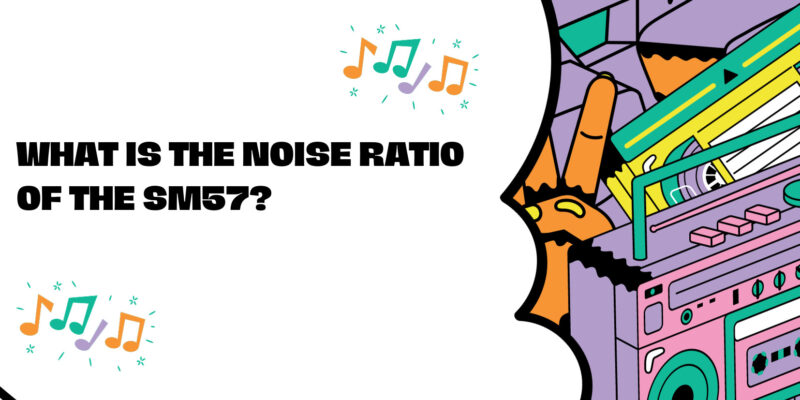When it comes to selecting a microphone for recording or live sound applications, understanding its technical specifications is crucial to achieving the best audio quality. One essential specification to consider is the noise ratio, which indicates how much unwanted noise the microphone generates. In this article, we will delve into the noise ratio of the Shure SM57 microphone and its significance in audio capture.
Understanding Noise Ratio
The noise ratio, often referred to as the signal-to-noise ratio (SNR) or noise floor, is a critical parameter in microphone performance. It represents the difference in level between the desired audio signal (your voice or instrument) and any unwanted noise generated by the microphone itself. A higher signal-to-noise ratio indicates that the microphone is better at capturing the desired sound while minimizing background noise.
The Shure SM57 and Noise Ratio
The Shure SM57 is a dynamic microphone known for its versatility, ruggedness, and ability to capture sound with clarity and precision. However, it’s important to note that, like all microphones, the SM57 does have a noise floor.
The noise ratio of the Shure SM57 can be described as follows:
- Low Self-Noise: The SM57 has relatively low self-noise compared to some other microphones in its class. This means that the inherent noise generated by the microphone itself is minimal, making it suitable for capturing subtle nuances in audio recordings.
- Dynamic Microphone Noise: Dynamic microphones like the SM57 typically have lower self-noise levels compared to condenser microphones. This characteristic makes them less susceptible to capturing background noise and unwanted interference.
- Practical Implications: In practical terms, the noise floor of the SM57 is generally considered low enough that it does not significantly impact the quality of recordings or live sound reinforcement. However, it’s essential to ensure that external factors, such as ambient room noise or interference, are also well-managed to maintain high-quality audio.
Maximizing Signal-to-Noise Ratio
While the Shure SM57 has a low self-noise level, there are additional steps you can take to maximize the signal-to-noise ratio in your recordings or live sound setups:
- Proper Gain Staging: Ensure that the microphone is correctly matched with the preamp or mixer’s input gain. Overdriving the microphone or preamp can introduce unwanted noise.
- Acoustic Treatment: In recording environments, consider using acoustic treatment to reduce room noise and reflections. This can help minimize unwanted noise sources.
- Quality Cables: Use high-quality cables to connect the microphone to your recording or sound reinforcement equipment. Inferior cables can introduce noise and interference.
- Phantom Power: If you’re using the SM57 with an audio interface or mixer that provides phantom power (even though the SM57 doesn’t require it), make sure it’s clean and free of noise.
Conclusion
In conclusion, the Shure SM57 is known for its low self-noise and solid signal-to-noise ratio, making it a reliable choice for a wide range of audio applications. While the noise ratio of the SM57 is generally low and well-suited for most recording and live sound scenarios, it’s essential to consider other factors such as proper gain staging and acoustic treatment to ensure optimal audio quality. Ultimately, the SM57’s noise performance contributes to its reputation as a versatile and dependable microphone in the audio industry.


